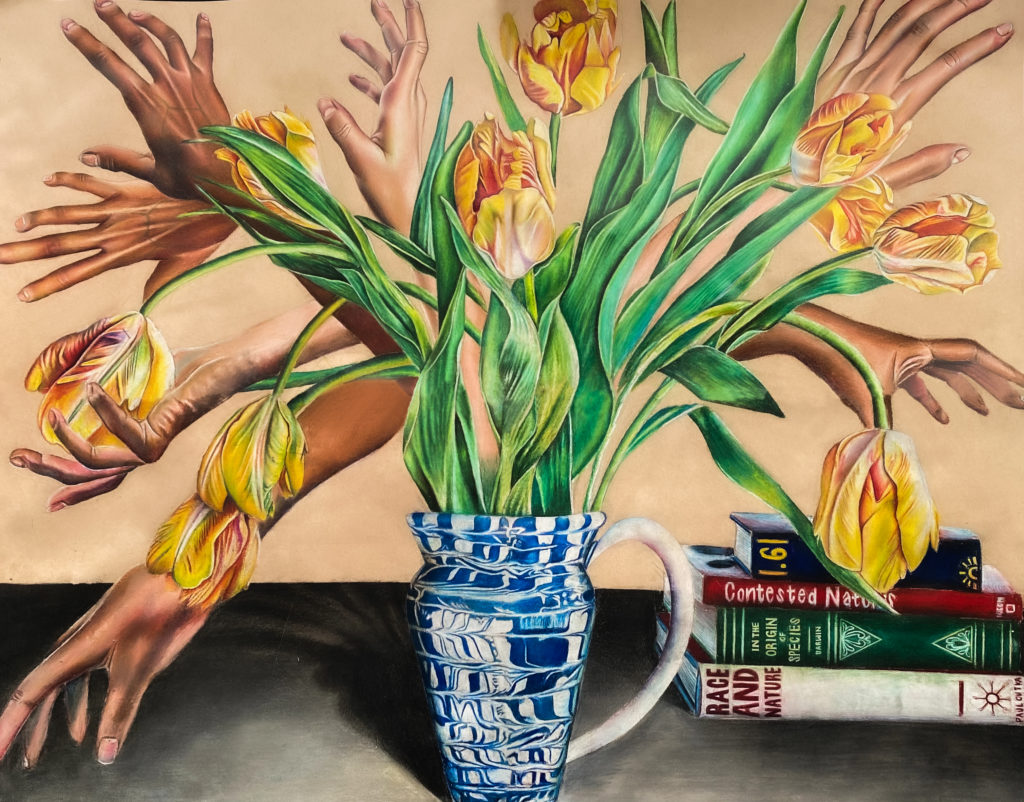
This work began as a still life. As I began to work on the plant sprawling out of the vase, I felt a kind of emotional connection to the shape of the leaves– the way they twisted and curled until reaching the flower, almost like they were reaching out to something. This personification of leaves is what inspired me to add hands to my composition. I intended for the gesture of the hands and the positioning of the fingers to express grief, longing and desperation. It felt like these emotions were pervasive amid quarantine, racial unrest, and a turbulent political climate.
As a viewer, I thought this composition was visually interesting because there’s so much going on with the hands and flowers nearer to the outskirts of the painting, but you’re drawn to the center. You have to make that effort to try to comprehend the full picture by darting around the piece, but the gravity of the focal point tethers you to the center, despite the fact that most of the ‘action’ is happening elsewhere. In this way, the process of viewing my piece serves a reminder that disparate subjects, people, and systems share a core.
This idea spurred me to think about evolution– the way we all share a common ancestry.
The titles of the books on the bottom left-hand corner are meant to provoke the viewer into thinking about the relationship between race and nature. Specifically, Darwin’s On The Origin of Species and the golden ratio– 1.16– are intended to communicate our common origin. So, I wanted to have this idea of unity, but also have the hands ultimately face different directions, signifying disparateness.
Usually, my creative process goes something like that– starting with one idea, then weaving current issues on my mind into the composition.
Christina is a junior at the Thacher school. In her spare time, she enjoys drawing, tea and podcasts.